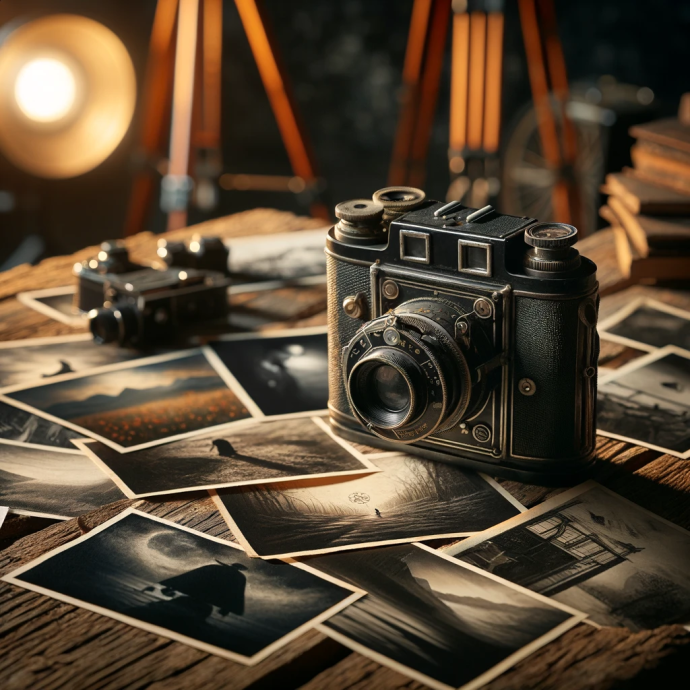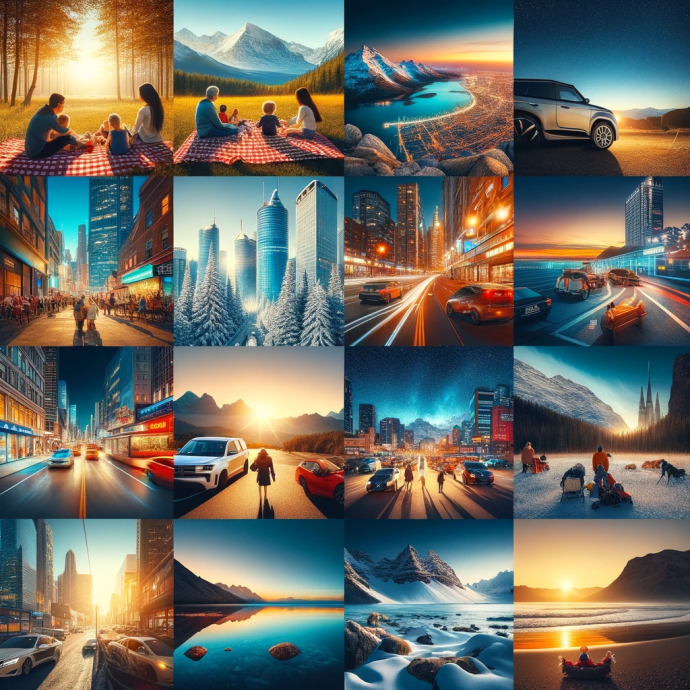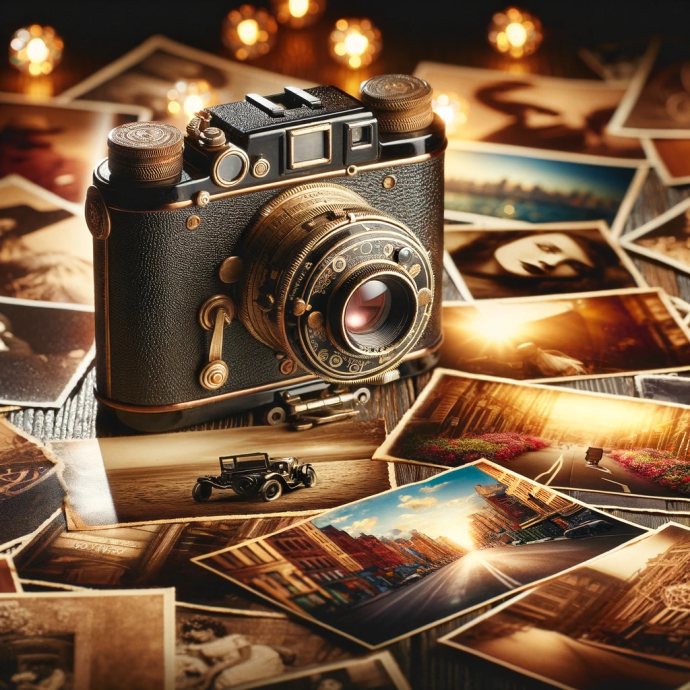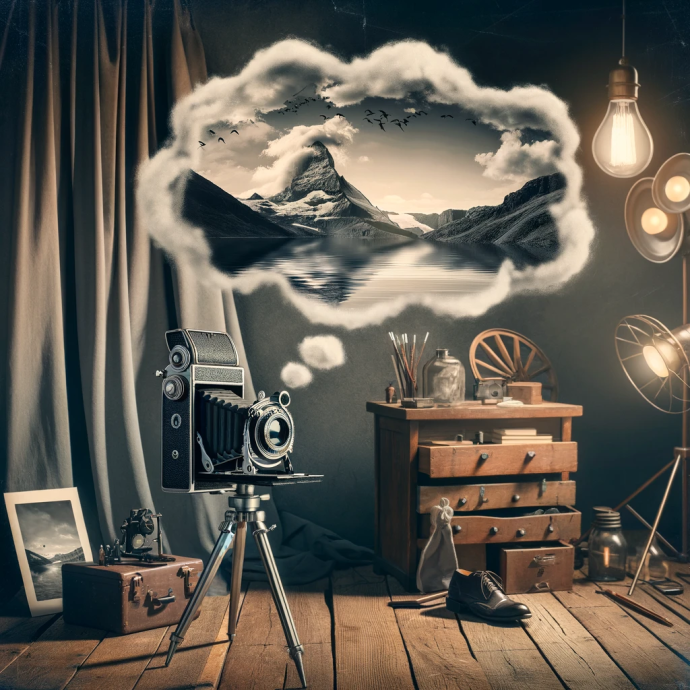A.I. Is the Future of Photography. Does That Mean Photography Is Dead?

In the area of images, a fascinating debate stirs the heart of the artwork world: Is the rise of A.I. Technology a bring-in of images's death, or does it mark a brand new bankruptcy in its evolution?
John Szarkowski, a visionary and previous curator at the Museum of Modern Art, as soon as poignantly described photography as “the act of pointing.” This act has spanned nearly centuries, evolving from capturing mild on physical mediums to embracing the airy pixels of the digital age.
As digital cameras swept the world, purists mourned the fading appeal of analogue. Yet, Szarkowski's principle remained unchallenged – images became nevertheless approximately pointing, reacting, shooting something tangible in our international. However, with the advent of AI image mills, this enduring definition seems to teeter on the point of obsolescence.
AI Creations or Just Snapshots?

A.I. Gear, with their capacity to conjure photorealistic snapshots from mere phrases, have nudged their way into the echelons of mainstream pictures, regularly indistinguishable from traditional pix. Their presence, simultaneously charming and unsettling, has stirred a profound philosophical debate: What truely defines a photograph in this new era?
This isn't always just a reliance on semantic hair-splitting. The practice of labeling A.I. Creations as “snapshots” adds to an already dizzying sense of disorientation. The virtual age has flooded us with photographs – over one thousand billion snapshots are taken each 12 months. These can be without problems manipulated, yet they still undergo an immediate link to actual scenes and activities. But now, we’re dealing with an avalanche of photos that, regardless of their artistic benefit or convincing realism, exist at a get rid of from the tangible world. A.I. Pix are virtual mosaics, pieced together from infinite existing photos. They challenge our know-how of fact, leaving us to marvel: Can we believe whatever we see?
Beyond issues for the livelihoods of expert photographers, especially in business images, there’s a deeper societal worry. A.I. Photograph generators may grow our vulnerability to big manipulation, as verified through doctored A.I. Pictures depicting sensational activities or figures in incredible eventualities. Yet, there’s a silver lining. These tendencies should ignite a broader discussion approximately visible media, their relation to truth, and our belief of truth.
The Mistake-Thyself

Artists and intellectuals have long commented on our human tendency to challenge elusive notions of truth onto -dimensional surfaces. Franz Kafka, in 1921, whimsically dubbed a portrait system as “The Mistake-Thyself,” hinting at the inherent misinterpretations in mechanical reproductions. Susan Sontag, in her seminal 1977 essay “In Plato’s Cave,” echoed this sentiment, affirming that even as cameras seize fact, they also interpret it, similar to paintings and drawings. Each picture is a fruits of picks fashioned via the photographer's biases and the technology’s limitations.
So, whilst a few proclaim the appearance of A.I. As an existential risk to pictures, we bear in mind the story of French painter Paul Delaroche who, upon encountering a daguerreotype, one of the earliest photographic innovations, proclaimed portray as “useless.” Painting failed to die; it evolved right into a one of a kind shape of artistry, liberated from the strictures of realism. Photography now stands at a comparable crossroads.
What Do Masters of Photography Think of This?

Alejandro Cartagena, a seasoned documentary photographer, acknowledges the photographic essence in A.I. Pics. He notes that A.I. Fashions apprehend framing and composition in photographic phrases, knowledgeable through a wealthy history of visible storytelling. These fashions are not merely developing; they are studying from the extensive repository of photographs that humanity has amassed, predominantly pics. Cartagena sees A.I. Generation as an inevitable development, a way to repurpose the overpowering collection of pictures into some thing significant.
Laurie Simmons, reflecting on her adventure with A.I., describes it as a route of introduction and discovery. For her, A.I. Aligns perfectly with her creative ethos – exploring the deceptive nature of photographs. A.I., in her view, is a herbal extension of pictures’s potential to manufacture realities.
Trevor Paglen approaches pictures with an important eye. He contends that the belief that a picture captures an unvarnished truth has usually been a fallacy. Paglen emphasizes the significance of not relying solely on pics to recognize the arena, as that route ends in misconceptions and myths.
The views of those artists highlight a common thread: the subjective nature of pictures and its evolving dating with generation. They apprehend the transformative energy of A.I., but also recognize the need for a balanced method that respects the artwork shape's legacy whilst embracing its destiny.
As we navigate this new technology, the verbal exchange around A.I. And images turn into a reflection of our anxieties, hopes, and the inexorable march of generation. It’s a dialogue that not best reshapes our information of photography but additionally demands situations for us to reconsider our relationship with the snapshots that surround us, the memories they inform, and the truths they claim to represent.














Comments . 0